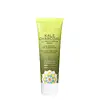What's inside
What's inside
 Key Ingredients
Key Ingredients

 Benefits
Benefits

 Concerns
Concerns

 Ingredients Side-by-side
Ingredients Side-by-side

Water
Skin ConditioningKaolin
AbrasiveBentonite
AbsorbentGlycerin
HumectantEpilobium Angustifolium Leaf Extract
Skin ConditioningCharcoal
AbrasiveBrassica Oleracea Acephala Leaf Extract
HumectantCamellia Sinensis Extract
AntioxidantXanthan Gum
EmulsifyingAloe Barbadensis Leaf Juice
Skin ConditioningPotassium Sorbate
PreservativeMoringa Oleifera Seed Oil
EmollientUndaria Pinnatifida Extract
Skin ConditioningFucus Vesiculosus Extract
EmollientCucumis Sativus Fruit Extract
EmollientPanthenol
Skin ConditioningMethyl Lactate
PerfumingPhenoxyethanol
PreservativeEthylhexylglycerin
Skin ConditioningParfum
MaskingWater, Kaolin, Bentonite, Glycerin, Epilobium Angustifolium Leaf Extract, Charcoal, Brassica Oleracea Acephala Leaf Extract, Camellia Sinensis Extract, Xanthan Gum, Aloe Barbadensis Leaf Juice, Potassium Sorbate, Moringa Oleifera Seed Oil, Undaria Pinnatifida Extract, Fucus Vesiculosus Extract, Cucumis Sativus Fruit Extract, Panthenol, Methyl Lactate, Phenoxyethanol, Ethylhexylglycerin, Parfum
Water
Skin ConditioningBentonite
AbsorbentSodium C14-16 Olefin Sulfonate
CleansingTitanium Dioxide
Cosmetic ColorantPumice
AbrasivePropylene Glycol
HumectantVinegar
Kaolin
AbrasiveXanthan Gum
EmulsifyingMagnesium Aluminum Silicate
AbsorbentCocamidopropyl Betaine
CleansingDisodium EDTA
Citric Acid
BufferingDiazolidinyl Urea
PreservativeMethylchloroisothiazolinone
PreservativeMethylisothiazolinone
PreservativeParfum
MaskingHexyl Cinnamal
PerfumingCI 15985
Cosmetic ColorantCI 16035
Cosmetic ColorantWater, Bentonite, Sodium C14-16 Olefin Sulfonate, Titanium Dioxide, Pumice, Propylene Glycol, Vinegar, Kaolin, Xanthan Gum, Magnesium Aluminum Silicate, Cocamidopropyl Betaine, Disodium EDTA, Citric Acid, Diazolidinyl Urea, Methylchloroisothiazolinone, Methylisothiazolinone, Parfum, Hexyl Cinnamal, CI 15985, CI 16035
Ingredients Explained
These ingredients are found in both products.
Ingredients higher up in an ingredient list are typically present in a larger amount.
Bentonite is an aluminium phyllosilicate clay with great absorbent properties. The name 'bentonite' comes from the area where the largest source is found: Fort Benton, Wyoming.
As a clay, bentonite is often used to absorb excess oil and provide exfoliation. It has also been shown to have some antibacterial and anti-inflammatory properties. Studies show bentonite was effective at calming dermatitis from poison ivy and in diaper dermatitis of infants. Bentonite has also been shown to act as a barrier against toxic compounds on your skin.
Sunscreens containing bentonite display higher water resistance and stay on the skin for much longer. The sunscreens containing bentonite also show higher potency and UV light absorbtion.
Bentonite is naturally created from volcanic ash and several natural weathering/hydrothermal processes.
A common usage of bentonite is removing excess protein from white wines. Bentonite contains a property of being able to absorb large amounts of protein from aqueous solutions.
Phyllosilicate clay has a structure formed by sheets.
Learn more about BentoniteKaolin is a clay. It is used for oil control and to help minimize pores. Like other clays, kaolin has the ability to absorb excess sebum or oil. This can help clean out pores and mattify the skin.
Some types of kaolin may have exfoliating properties. When water is added to kaolin, it becomes a paste with small abrasive particles.
Most kaolin is a white color, but may be pink/orange/red depending on where it comes from.
The name 'kaolin' comes from a Chinese village named 'Gaoling'. Kaolin clay comes from rocks rich in kaolinite. Kaolinite, the mineral, has a silicate layered structure. Kaolinite is formed from chemical weathering of aluminum siilicate minerals.
Besides skincare, kaolin is commonly used to make glossy paper, in ceramics, toothpaste, and as medicine to soothe stomach issues.
Learn more about KaolinParfum is a catch-all term for an ingredient or more that is used to give a scent to products.
Also called "fragrance", this ingredient can be a blend of hundreds of chemicals or plant oils. This means every product with "fragrance" or "parfum" in the ingredients list is a different mixture.
For instance, Habanolide is a proprietary trade name for a specific aroma chemical. When used as a fragrance ingredient in cosmetics, most aroma chemicals fall under the broad labeling category of “FRAGRANCE” or “PARFUM” according to EU and US regulations.
The term 'parfum' or 'fragrance' is not regulated in many countries. In many cases, it is up to the brand to define this term.
For instance, many brands choose to label themselves as "fragrance-free" because they are not using synthetic fragrances. However, their products may still contain ingredients such as essential oils that are considered a fragrance by INCI standards.
One example is Calendula flower extract. Calendula is an essential oil that still imparts a scent or 'fragrance'.
Depending on the blend, the ingredients in the mixture can cause allergies and sensitivities on the skin. Some ingredients that are known EU allergens include linalool and citronellol.
Parfum can also be used to mask or cover an unpleasant scent.
The bottom line is: not all fragrances/parfum/ingredients are created equally. If you are worried about fragrances, we recommend taking a closer look at an ingredient. And of course, we always recommend speaking with a professional.
Learn more about ParfumWater. It's the most common cosmetic ingredient of all. You'll usually see it at the top of ingredient lists, meaning that it makes up the largest part of the product.
So why is it so popular? Water most often acts as a solvent - this means that it helps dissolve other ingredients into the formulation.
You'll also recognize water as that liquid we all need to stay alive. If you see this, drink a glass of water. Stay hydrated!
Learn more about WaterXanthan gum is used as a stabilizer and thickener within cosmetic products. It helps give products a sticky, thick feeling - preventing them from being too runny.
On the technical side of things, xanthan gum is a polysaccharide - a combination consisting of multiple sugar molecules bonded together.
Xanthan gum is a pretty common and great ingredient. It is a natural, non-toxic, non-irritating ingredient that is also commonly used in food products.
Learn more about Xanthan Gum